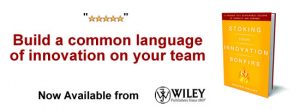3 Important Initiatives – What it takes to be a leader today
 Going for a stroll in the wilderness earlier this week, with my son and dog, an insight clearly emerged: The leaders I have been working with for the last 20 years are working on three important initiatives:
Going for a stroll in the wilderness earlier this week, with my son and dog, an insight clearly emerged: The leaders I have been working with for the last 20 years are working on three important initiatives:
1. Becoming or Maintaining their Role as a Center of Excellence
They have staked a claim in their space and taken responsibility to advance their profession, industry or cause in ways that are unmistakably the work of world-class leaders genuinely interested in shepherding and facilitating evolution; i.e., increasingly effective forms of adaptation.
These organizations regularly bring their smartest people together to discuss the toughest issues. They do their best to surface the highest value agenda and use it to drive knowledge deep, mining for new applications of existing know-how. They also push the perimeter, stretching out to find adjacent markets where they can apply what they do best.
This I know from working closely with these leaders: taking accountability for leading the world in your particular space while you run a business model that sustains that level of output requires a different kind of mindset than knowing how to expertly run a known business model continuously with as little variation as required. In today’s age of change, the former has distinct advantages.
2. Doing their Best to Chart the Uncertain Future
Change is everywhere, across every sector. Technology breakthroughs are continuously delivered to market. The American political landscape has two of its four presidential candidates built on a platform of revolution, and there is so much dust in the air many are concerned one of them will take the White House. Financial and business trends can grow quickly from unexpected places and have systemic impact. Large forces seem to be able to move dangerously fast.
Smart organizations focus resources on their windshield (emerging trends, opportunities that are shaping up, relevant news), not just their rear view mirror (how did we do it before? what does our balance sheet say?). They engage thought leaders and volunteers to openly discuss scenarios and connect dots, documenting the outcomes and sharing them with their customers.
They frame challenges in ways helpful to their customers. They look for best practices among customer processes and help them to spread or scale. They make it their business to help their customers succeed. This is especially challenging during times of flux. Customers need them all the more.
Learning organizations support the market economy by enabling those who are hungry for knowledge to stay abreast of developments, correlate data to anticipate patterns, and plan how to use scenarios to advantage. This is called creating a knowledge economy. It is extremely helpful when the future is uncertain. It is an act of risk mitigation. At tis best it enables strategic foresight. And it can pay off handsomely when you find something significant before others do, simply because you were looking and they were not.
3. Leveraging their Experience and Acumen for Society as a Whole
We live in an interconnected world. Isolated businesses are vulnerable to being extinguished by the sheer scale of competitive market forces. Becoming part of a larger value network is a must for survival.
Couple alliances with becoming a center of excellence, and their organizations become prized by the larger network. This attracts resources: money, knowledge, expertise, time, energy. It also attracts attention. The prerequisites for success in this space are clarity, brand equity, capability, leadership and an unwavering focus on delivering impact.
All in all, my walk in the woods clarified – for me at least – some of what it takes to succeed as a leader today.
Wait! Before you go…
Choose how you want the latest innovation content delivered to you:
- Daily — RSS Feed — Email — Twitter — Facebook — Linkedin Today
- Weekly — Email Newsletter — Free Magazine — Linkedin Group
 Seth Kahan is a Facilitator, Advisor, Mentor, and Speaker who helps leaders identify, influence, and leverage emerging trends for business growth. He has consulted with CEOs and executives in organizations that include Shell, World Bank, Peace Corps, Marriott, Prudential, Project Management Institute, and NASA. His new book is, Getting Innovation Right: How Leaders Leverage Inflection Points to Drive Success. His previous book, Getting Change Right: How Leaders Transform Organizations from the Inside Out, was a business bestseller. Learn more at VisionaryLeadership.com
Seth Kahan is a Facilitator, Advisor, Mentor, and Speaker who helps leaders identify, influence, and leverage emerging trends for business growth. He has consulted with CEOs and executives in organizations that include Shell, World Bank, Peace Corps, Marriott, Prudential, Project Management Institute, and NASA. His new book is, Getting Innovation Right: How Leaders Leverage Inflection Points to Drive Success. His previous book, Getting Change Right: How Leaders Transform Organizations from the Inside Out, was a business bestseller. Learn more at VisionaryLeadership.com
NEVER MISS ANOTHER NEWSLETTER!
LATEST BLOGS
How Small is Too Small?
When it comes to a hotel room, how small is too small. There are several new entrants into the hotel…
Read MoreMost Successful Loser in History
I came across an interesting branding article on a BusinessWeek blog the other day about Al Gore, and I have…
Read More


